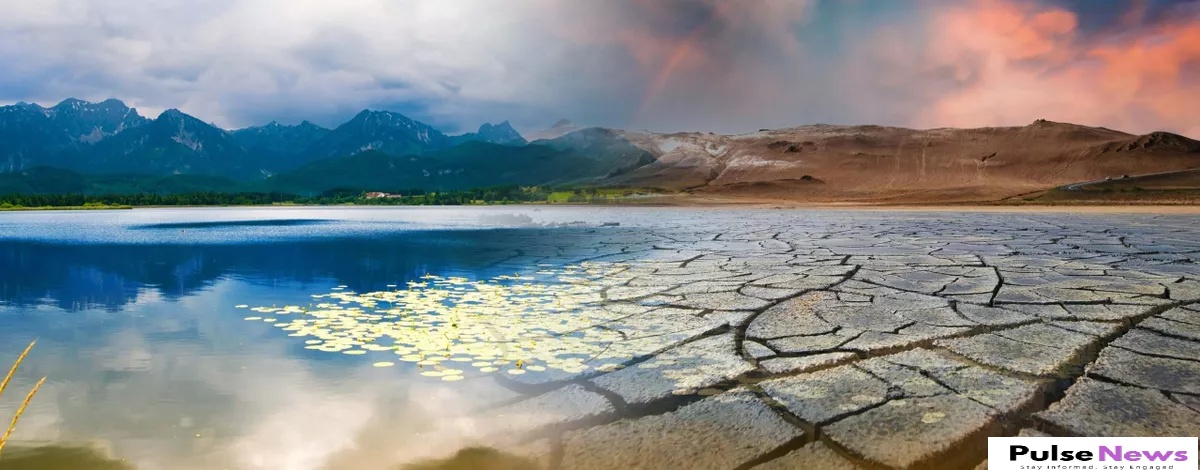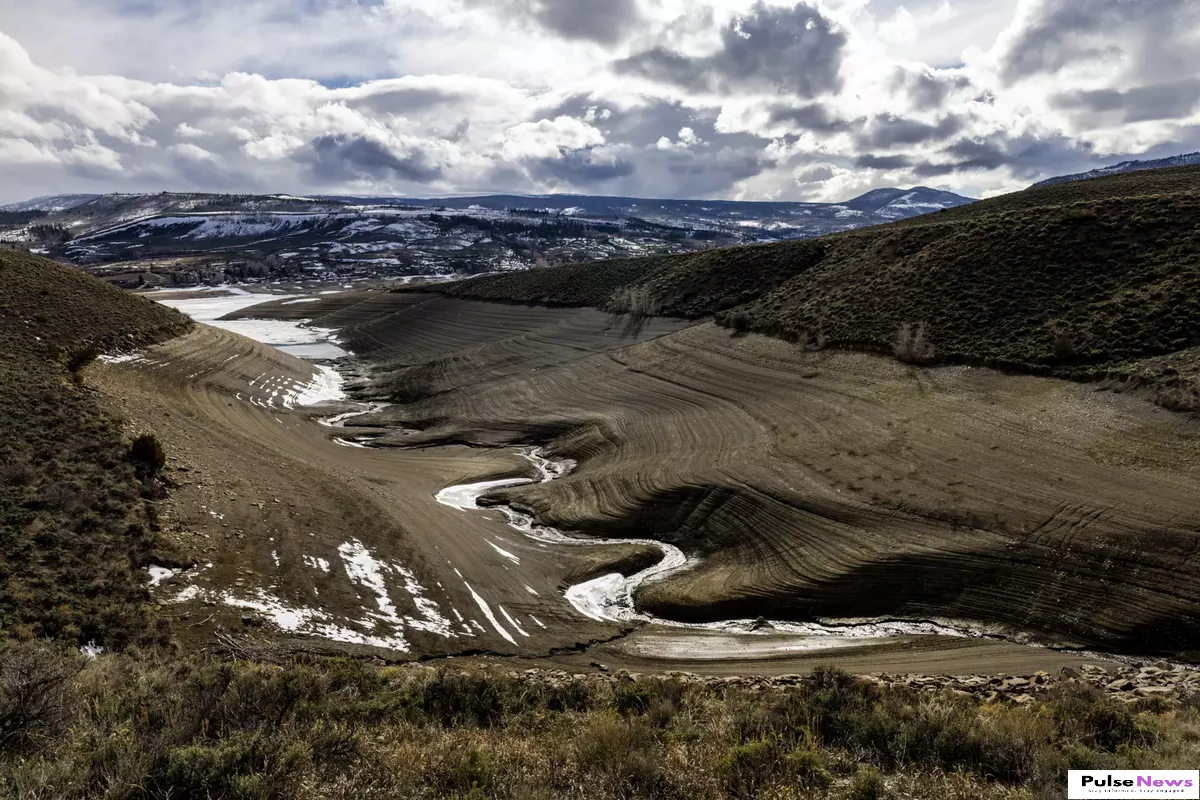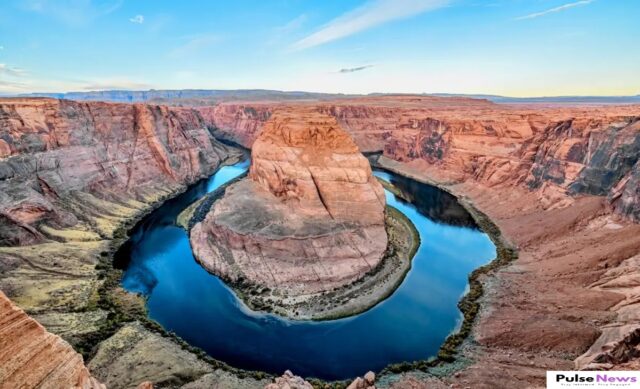Droughts have long defined the landscape of the American West, shaping its ecosystems and economies. However, these recurrent dry spells, once attributed solely to low rainfall, are increasingly recognized as products of a warming planet. Rising temperatures, primarily driven by human-induced climate change, now exacerbate the effects of drought more significantly than reduced precipitation, according to recent research by scientists at UCLA and the National Oceanic and Atmospheric Administration (NOAA).

This groundbreaking study reveals that as temperatures rise, so does the rate of evaporation, intensifying drought conditions beyond what could be explained by rainfall shortages alone. Published findings from this research underscore the urgent need to rethink drought causes, effects, and future projections in the American West. The results also call for policy action to mitigate the warming trends that could soon make droughts more severe, frequent, and persistent.
Understanding Drought in the American West A New Perspective
Historically, droughts have been seen as periods of insufficient rainfall, where a lack of water supply disrupted the balance of soil moisture, vegetation, and water bodies. While precipitation certainly plays a role in drought development, the recent study led by UCLA professor Rong Fu suggests that it may not be the primary driver of drought severity in the modern era. In fact, evaporative demand, a process intensified by warmer temperatures, has emerged as a far more potent force.
In looking at the 2020-2022 dry season, scientists verified that vanishing represented 61% of the dry spell’s power, while diminished precipitation contributed just 39%. This change in getting it, underscored by Fu, is historic: “Exploration has previously shown that hotter temperatures add to dry season, however this is, as far as anyone is concerned, the principal concentrate on that really shows that dampness misfortune because of interest is more noteworthy than the dampness misfortune because of absence of precipitation.” As temperatures increment, so too does the air’s “thirst” for dampness, basically pulling water from soils, plants, and supplies, prompting dry spell strengthening.
The Role of Evaporative Demand in Modern Droughts
Evaporative demand, or the “thirst” of the atmosphere for water, has increased due to climate change, impacting the way droughts develop and persist. As temperatures rise, more moisture evaporates from the land and water sources into the atmosphere, effectively drying out the landscape. Even in situations where rainfall may appear normal, elevated temperatures lead to rapid evaporation, depleting moisture reserves that would otherwise sustain ecosystems and agriculture.

The scientists’ discoveries highlight another dry season worldview, one in which climbing temperatures outperform precipitation as the essential driver. This is a key shift from the customary view, as made sense of by Veva Deheza, chief head of NOAA’s Public Incorporated Dry season Data Framework and study co-creator: “For ages, dry spell has been related with drier-than-typical climate. This concentrate further affirms we’ve entered another worldview where increasing temperatures are prompting extraordinary dry spells, with precipitation as an optional element.”
The Complex Climate Dynamics Behind the American West’s Droughts
The relationship between evaporation, temperature, and rainfall is complex. While a warmer atmosphere holds more water vapor, it does not necessarily lead to increased rainfall in drought-prone regions. Instead, heat causes water molecules to remain in motion, making condensation—and, thus, precipitation—less likely. This cyclic process of evaporation without corresponding precipitation means that as the planet continues to warm, droughts will become drier, longer-lasting, and more widespread.
From a climatological perspective, droughts are a form of slow-onset disaster, often creeping into existence and intensifying over months or even years. Rising temperatures complicate this already slow process, as heat increases the rate of evapotranspiration (the combined loss of water from soil and vegetation), pulling more moisture from the ground and plants and compounding water scarcity. This effect has implications beyond local ecosystems; it influences regional water supplies, affects agricultural yields, and disrupts the balance of natural systems that rely on regular water cycles.
Climate Change’s Role in Amplifying Evaporative Demand
By analyzing data over the past 70 years, researchers uncovered that since 2000, climate change has accounted for roughly 80% of the increase in evaporative demand in the American West. In drought years, this figure rises even higher, with over 90% of increased demand attributable to climate-driven warming. The study reveals that since the turn of the century, climate change has transformed the very nature of droughts in the region. Once primarily caused by low rainfall, today’s droughts are increasingly defined by elevated temperatures and their effect on water demand. The study’s findings show a significant shift in drought patterns. Before 2000, only 26% of droughts were attributed to high evaporative demand. Since 2000, that number has jumped to 66%, indicating that modern droughts are largely heat-driven. The expansion in temperature-related dry seasons addresses a major change, as verified by Teacher Fu: “However the dry spell started through a characteristic decrease in precipitation, I would agree that its seriousness was expanded from what might be compared to ‘direct’ to ‘excellent’ on the dry spell seriousness scale because of environmental change.”

This shift has profound implications. If evaporative demand continues to increase, what we once considered “severe” drought conditions may soon become routine, with devastating effects on ecosystems, communities, and economies in the American West.
Consequences of Rising Drought Severity on Water Resources and Ecosystems
The water crisis in the West, exemplified by the drying of major reservoirs like Lake Mead and Lake Powell, is emblematic of the challenges that lie ahead. Drought severity is directly tied to water availability, and as the climate warms, managing water resources becomes increasingly challenging. Rivers, lakes, and groundwater reservoirs are critical sources of water for cities, agriculture, and natural habitats, but rising evaporative demand is reducing the quantity of water available to these systems. Decreased water availability also threatens biodiversity, as aquatic and terrestrial species struggle to survive in increasingly arid environments. Fish populations, for example, depend on cool, flowing waters to reproduce and thrive. As rivers and streams dry up, fish species lose their habitats, which affects the broader ecological web. Similarly, plant species adapted to certain moisture levels face stress, leading to changes in vegetation that ripple through food chains and affect wildlife.
The study’s findings also underscore the impact of climate change on forest health. Trees, unable to access sufficient moisture from soil, become stressed and more vulnerable to pests, diseases, and wildfires. These forest die-offs contribute to carbon release, further exacerbating global warming and creating a feedback loop that perpetuates drought and dryness.
The Socioeconomic Costs of Intensified Droughts
Droughts in the American West come with significant economic costs, affecting agriculture, energy production, and public health. Agriculture relies heavily on irrigation, which is increasingly difficult to maintain under severe drought conditions. As water resources dwindle, farmers may have to reduce crop production, leading to potential food shortages and higher prices. Additionally, crops that require consistent moisture, such as fruits and vegetables, are particularly vulnerable to temperature-induced water loss. The energy sector is also affected. Hydroelectric power, which depends on the flow of rivers and reservoirs, is less reliable during droughts, pushing energy providers to find alternative sources. For instance, California, a major producer of hydroelectric power, faces reduced electricity generation as water levels in key reservoirs decline. The decreased availability of hydropower adds strain to the electric grid, particularly during heat waves, when energy demand spikes due to air conditioning use.
The economic toll extends to tourism and recreation industries that rely on healthy lakes, rivers, and forests. For communities that depend on outdoor recreation, prolonged droughts result in lost revenue as visitors steer clear of dried-up lakes and fire-prone forests. Public health is also impacted, as droughts increase the risk of wildfires, which emit smoke that degrades air quality and exacerbates respiratory issues.
Future Projections and Warnings for Droughts in a Warmer World
The study from UCLA and NOAA offers a stark warning: if greenhouse gas emissions continue at current rates, what is currently considered a “severe” drought could become a normal, annual event. Rising temperatures will likely outpace any improvements in precipitation, meaning that droughts will become both more common and more severe. The researchers caution that unless emissions are curbed, the American West may face a new era of “megadroughts,” or droughts that persist for decades.
Professor Fu emphasizes that mitigating drought severity will require reducing greenhouse gas emissions. “Even if precipitation looks normal, we can still have drought because moisture demand has increased so much, and there simply isn’t enough water to keep up with that increased demand,” Fu explains. The implication is that drought resilience is not merely a matter of conserving water but also of addressing the root cause: rising temperatures driven by carbon emissions.
Policy Implications The Need for Climate-Adapted Drought Management

The study’s findings suggest that traditional water management strategies are insufficient for a future where temperature-driven droughts are the norm. Reservoirs and water storage infrastructure, once central to drought resilience, may no longer provide adequate relief. As Fu explains, “This is not something you could build bigger reservoirs or something to prevent because when the atmosphere warms, it will just suck up more moisture everywhere. The only way to prevent this is to stop temperatures from increasing, which means we have to stop emitting greenhouse gases.” To combat these new challenges, policymakers must develop adaptive water management strategies that account for the effects of climate change. Strategies could include increased water-use efficiency, investment in climate-resilient crops, and stronger regulations on water-intensive industries. Additionally, renewable energy sources that do not rely on water, such as solar and wind power, could play a role in reducing the strain on water resources.
For communities across the West, preparing for the economic impacts of drought is also essential. Diversifying local economies away from agriculture and water-intensive industries











